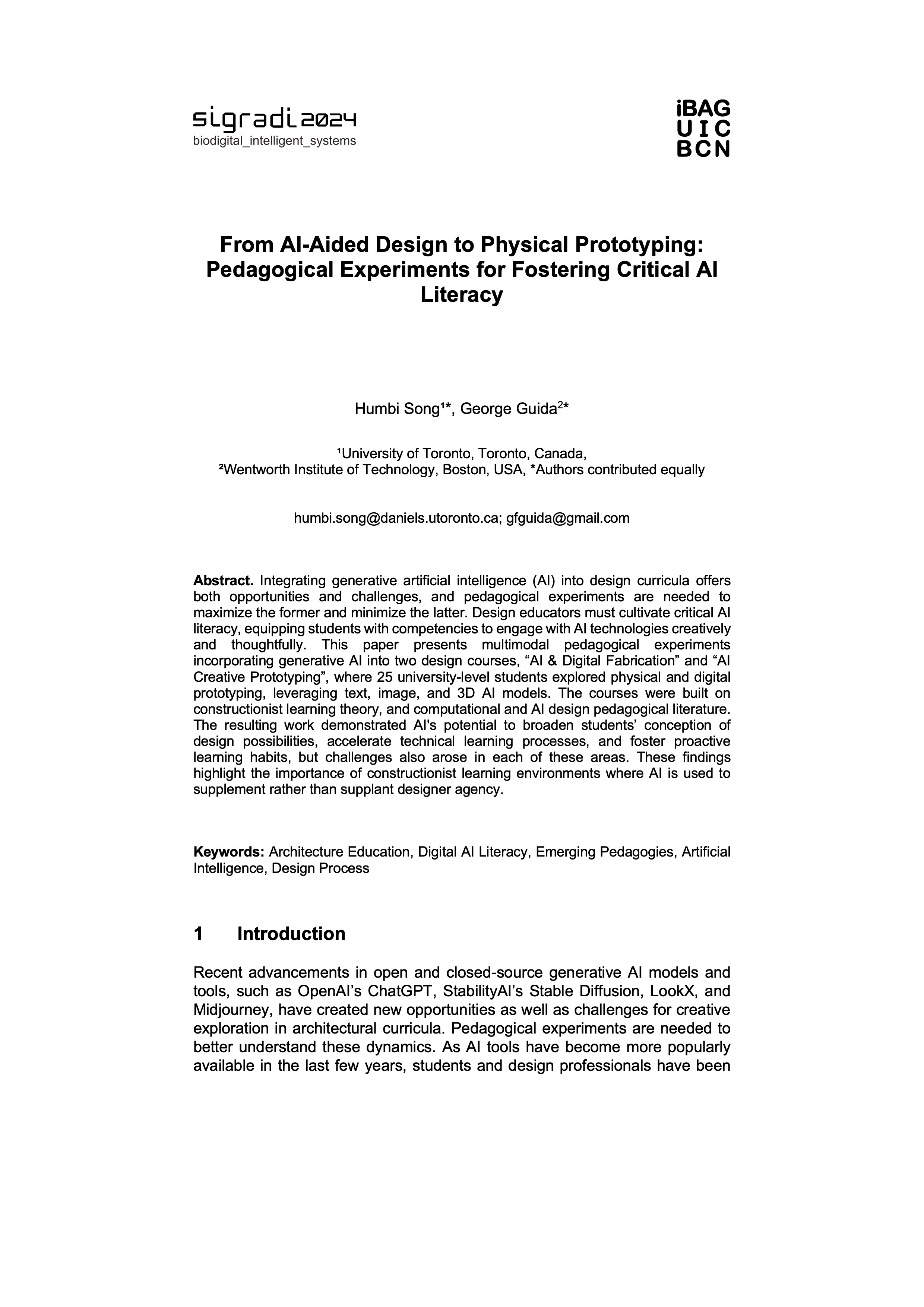Designing with AI? [Course Book]
︎Pedagogy
︎GenAI Literacy
︎Design Process/Workflows
Year: 2024
Northeastern University:
B.S. Arch, 14 Students
Course:
Design Tactics & Operations:
AI & Digital Fabrication
Introducing topics of generative AI into the design curricula offers both opportunities as well as significant challenges. As a design educator, I seek cultivate critical AI literacy. I have been developing pedagogical exercises to equip students with the competencies to engage with generative AI technologies thoughtfully as such tools become increasingly widespread through society and industry.
My 2024 seminar “AI and Digital Fabrication” encouraged 14 undergraduate architecture students to develop various experimental workflows of “making” in collaboration with AI. The course asked: When AI and digital information are taken outside of the computer screen and into the physical realm through fabrication tools and materials, how might material properties and tolerances interact with the designer and with AI?
The structure for the seminar was twofold:
(1) through a semester-long fabrication project, pairs of students prototyped a workflow of co-design and co-fabrication, from generative AI ︎︎︎ analyzing the image and hand sketching ︎︎︎ translation to digital fabrication tools ︎︎︎ producing an architectural/urban-scale model.
(2) Simultaneously, students analyzed their process as a written case study. They documented every step of the design process, every prompt they input into the AI tools, and noted down in what ways they observed, made use of, were surprised by, adapted to, or subverted the tendencies of the AI tools, material tolerances, and fabrication capabilities. Through this, they each contributed a book chapter in the book report, “Designing with AI?”.
The outcomes from the course were exhibited, published in the following book report, and analyzed as a case study in a peer-reviewed paper, “From AI-Aided Design to Physical Prototyping: Pedagogical Experiments for Fostering Critical AI Literacy” in the SIGRADI conference proceedings in 2024.
“From AI-Aided Design to Physical Prototyping: Pedagogical Experiments for Fostering Critical AI Literacy”
My 2024 seminar “AI and Digital Fabrication” encouraged 14 undergraduate architecture students to develop various experimental workflows of “making” in collaboration with AI. The course asked: When AI and digital information are taken outside of the computer screen and into the physical realm through fabrication tools and materials, how might material properties and tolerances interact with the designer and with AI?
The structure for the seminar was twofold:
(1) through a semester-long fabrication project, pairs of students prototyped a workflow of co-design and co-fabrication, from generative AI ︎︎︎ analyzing the image and hand sketching ︎︎︎ translation to digital fabrication tools ︎︎︎ producing an architectural/urban-scale model.
(2) Simultaneously, students analyzed their process as a written case study. They documented every step of the design process, every prompt they input into the AI tools, and noted down in what ways they observed, made use of, were surprised by, adapted to, or subverted the tendencies of the AI tools, material tolerances, and fabrication capabilities. Through this, they each contributed a book chapter in the book report, “Designing with AI?”.
The outcomes from the course were exhibited, published in the following book report, and analyzed as a case study in a peer-reviewed paper, “From AI-Aided Design to Physical Prototyping: Pedagogical Experiments for Fostering Critical AI Literacy” in the SIGRADI conference proceedings in 2024.
“From AI-Aided Design to Physical Prototyping: Pedagogical Experiments for Fostering Critical AI Literacy”
In Conference Proceedings of SIGRADI 2024
︎︎︎ Download Conference Paper
︎︎︎ Download Conference Paper
Book:
![]()
![]()
![]()
Exhibit:
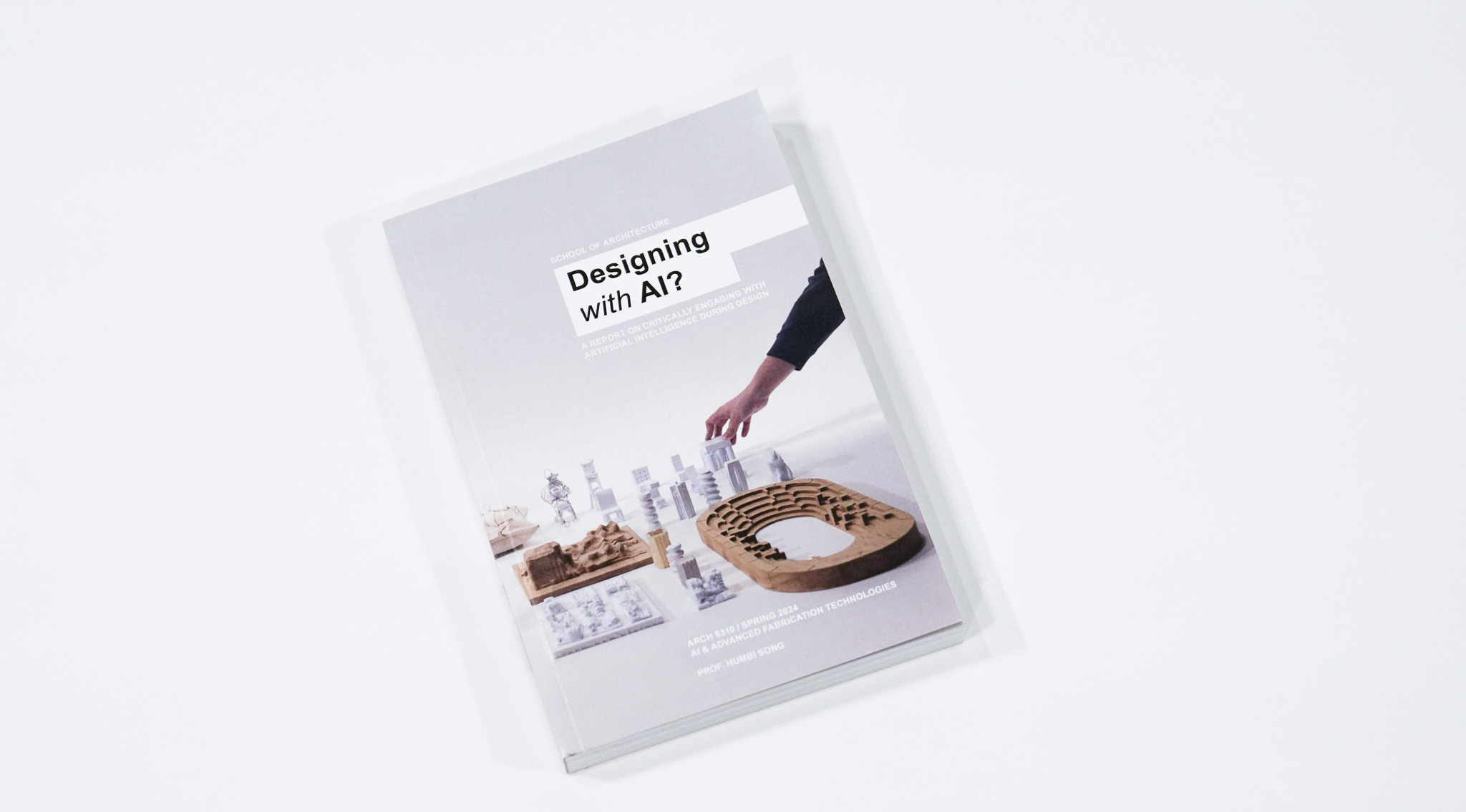


Exhibit:




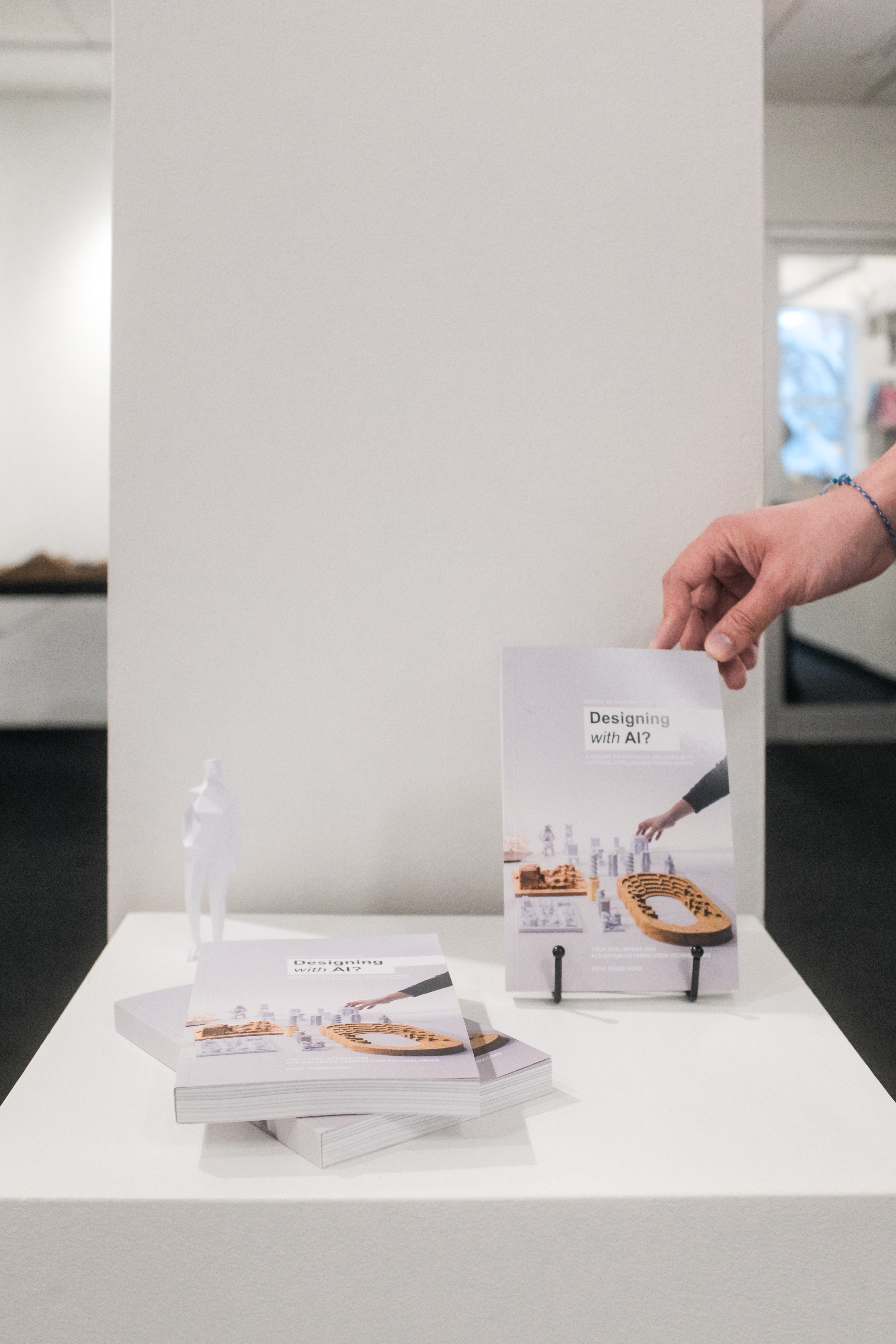
Examples
Part 1 ︎︎︎ Exploration, Analysis, and “How to read an AI image”
Phy-gital drawings / “uncanny sketching” // as artifacts to produce and analyze

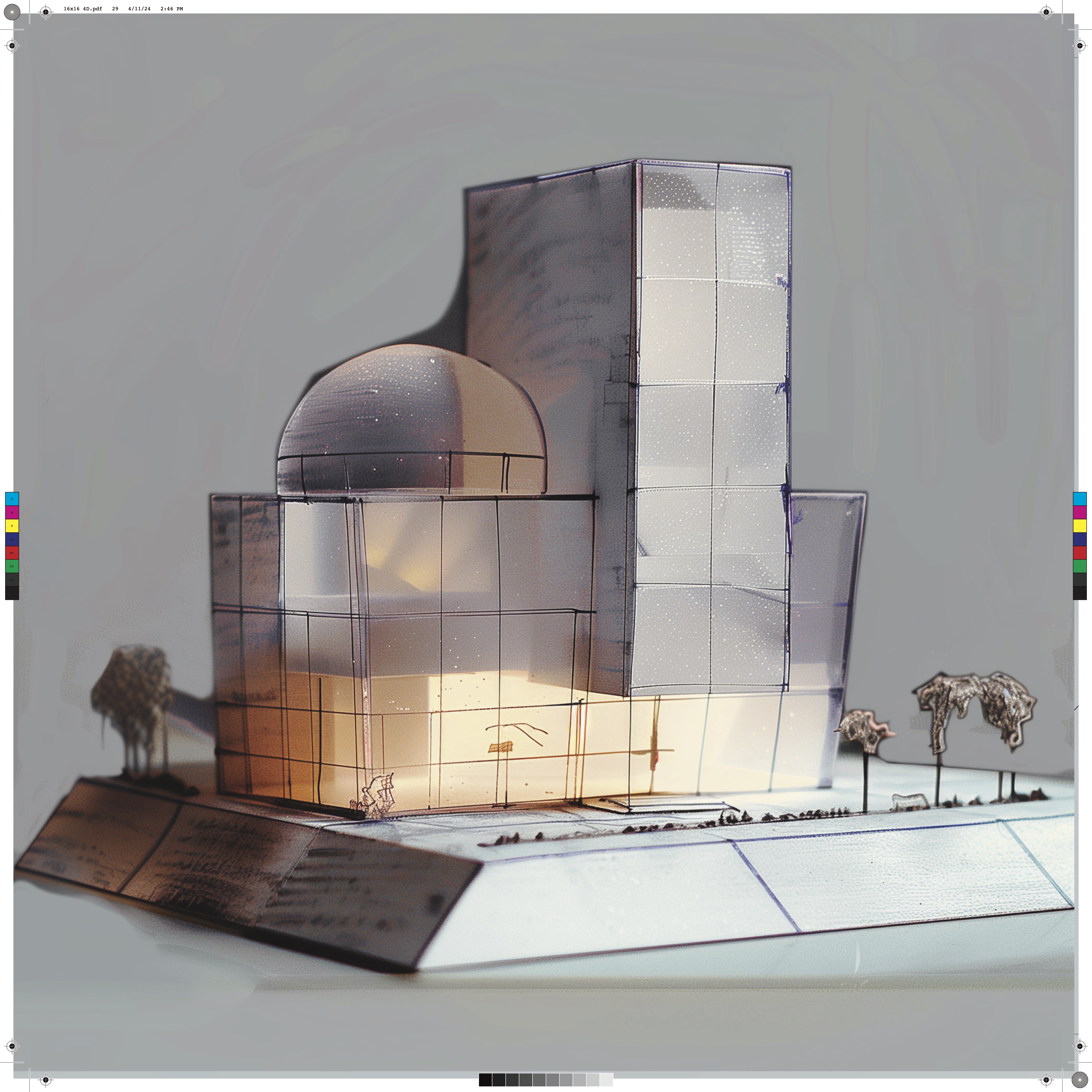


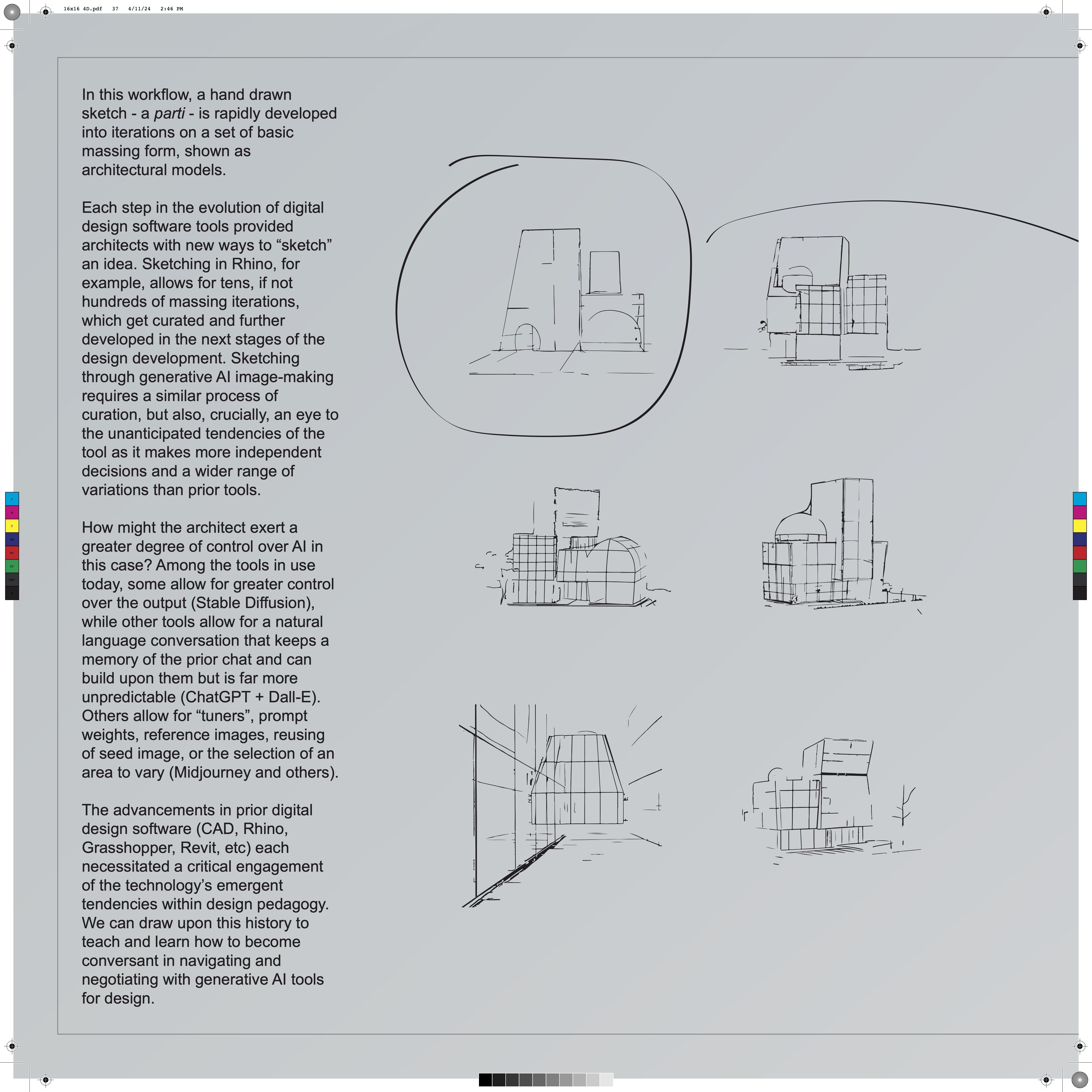

Phy-gital models / “uncanny space-making: // as artifacts to produce and analyze
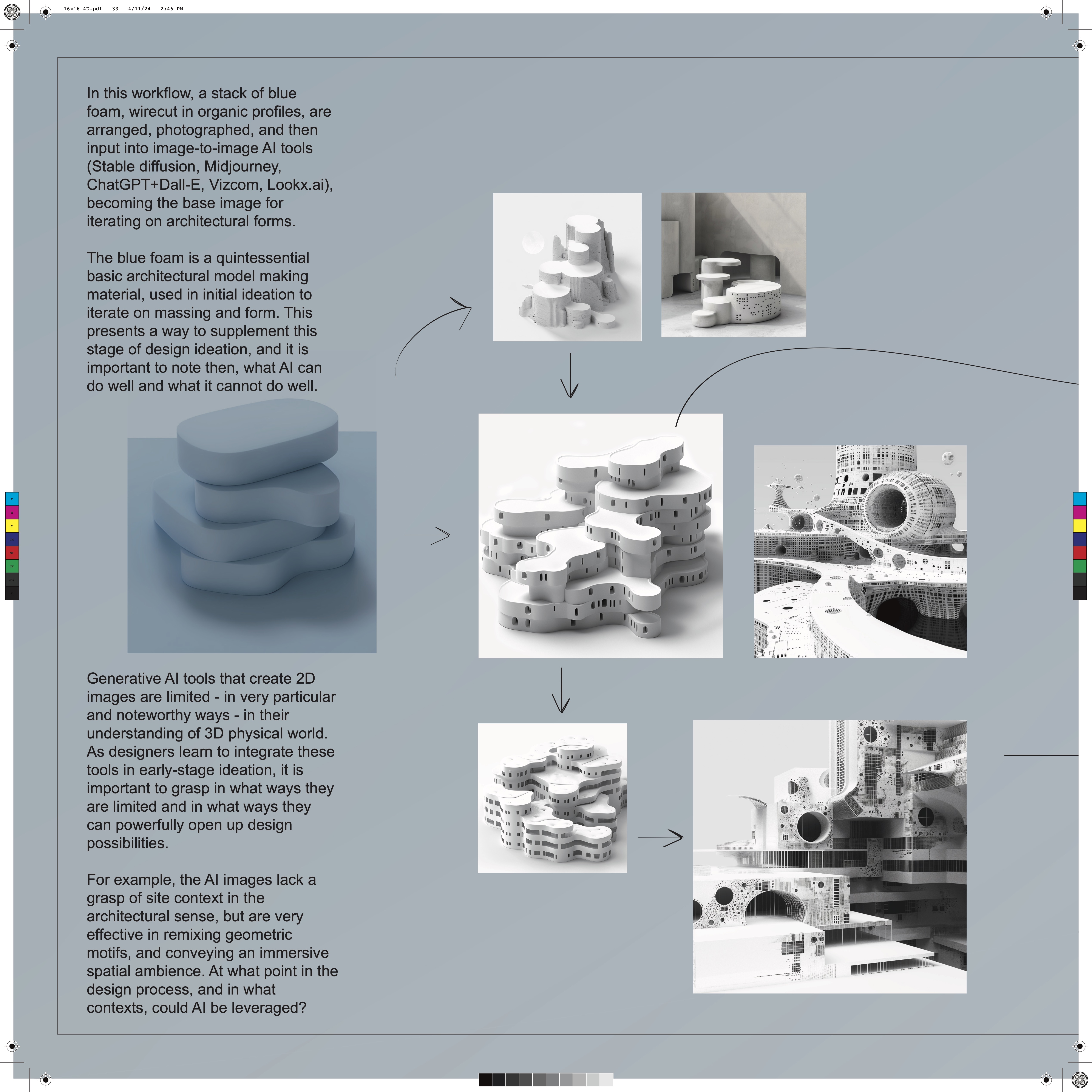
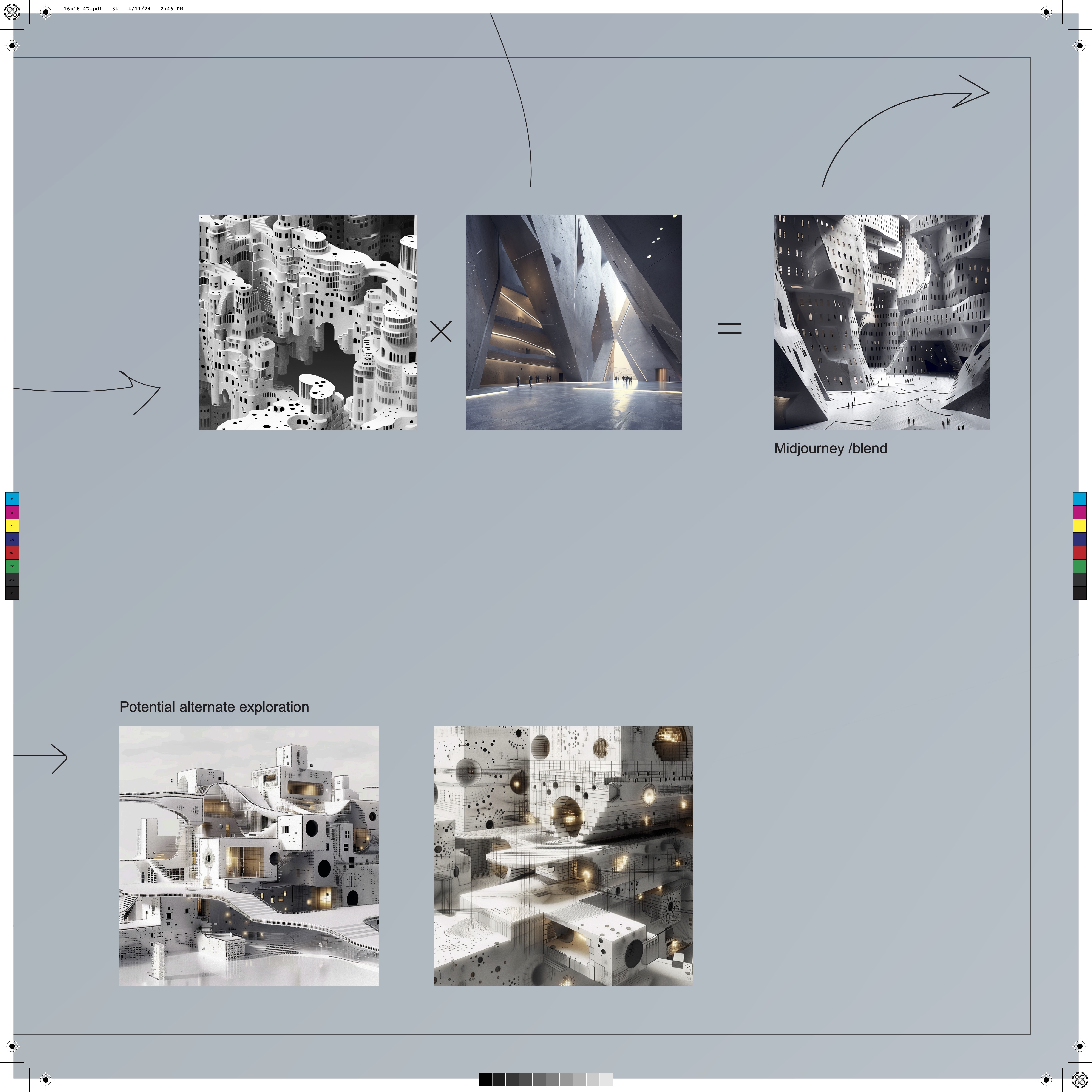


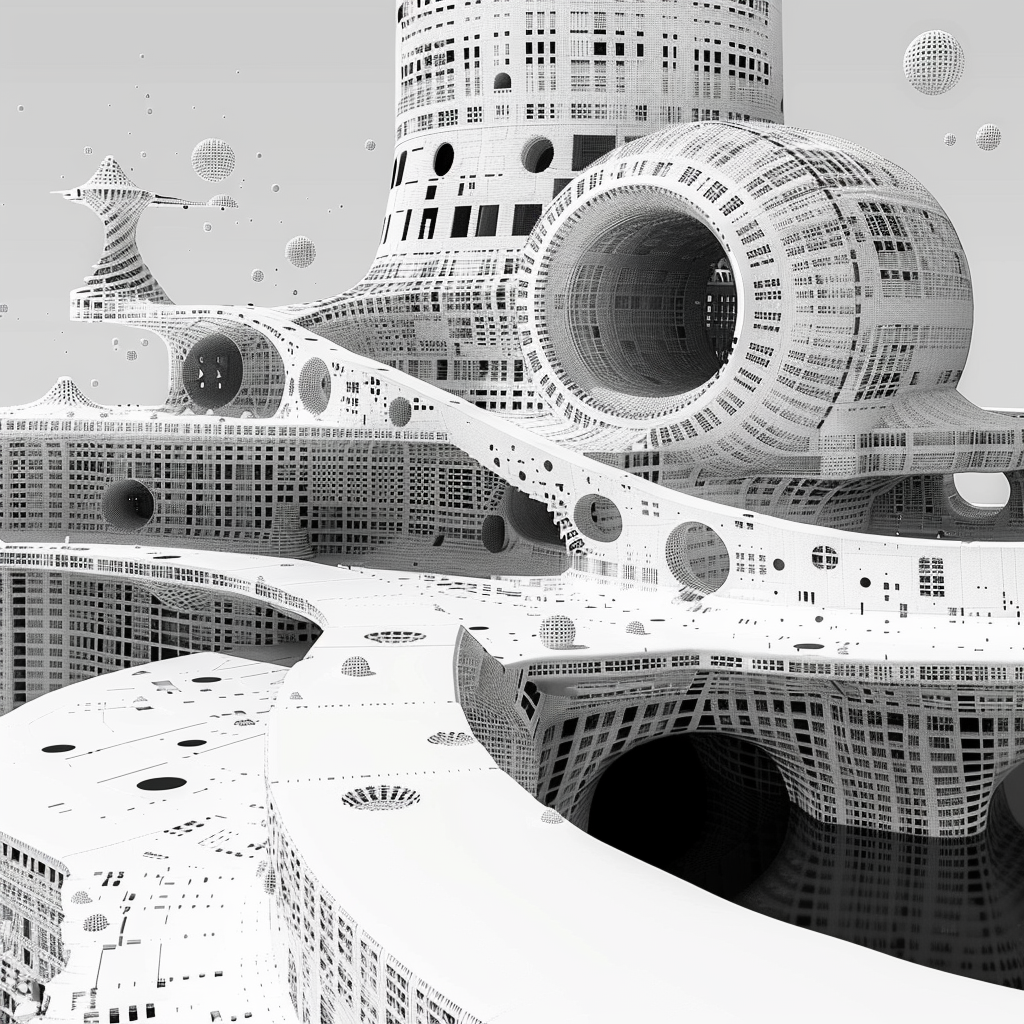

Part 2 ︎︎︎ Going from 2D imagery to 3D fabricated models
(and learning how to use digital fabrication tools: CNC-ing / 3D printing)
Group 1: Designing a chair without every saying the word “chair” to generative AI // meaning of language




Group 2: Urban blocks // what gets added/lost in translations of language to form?



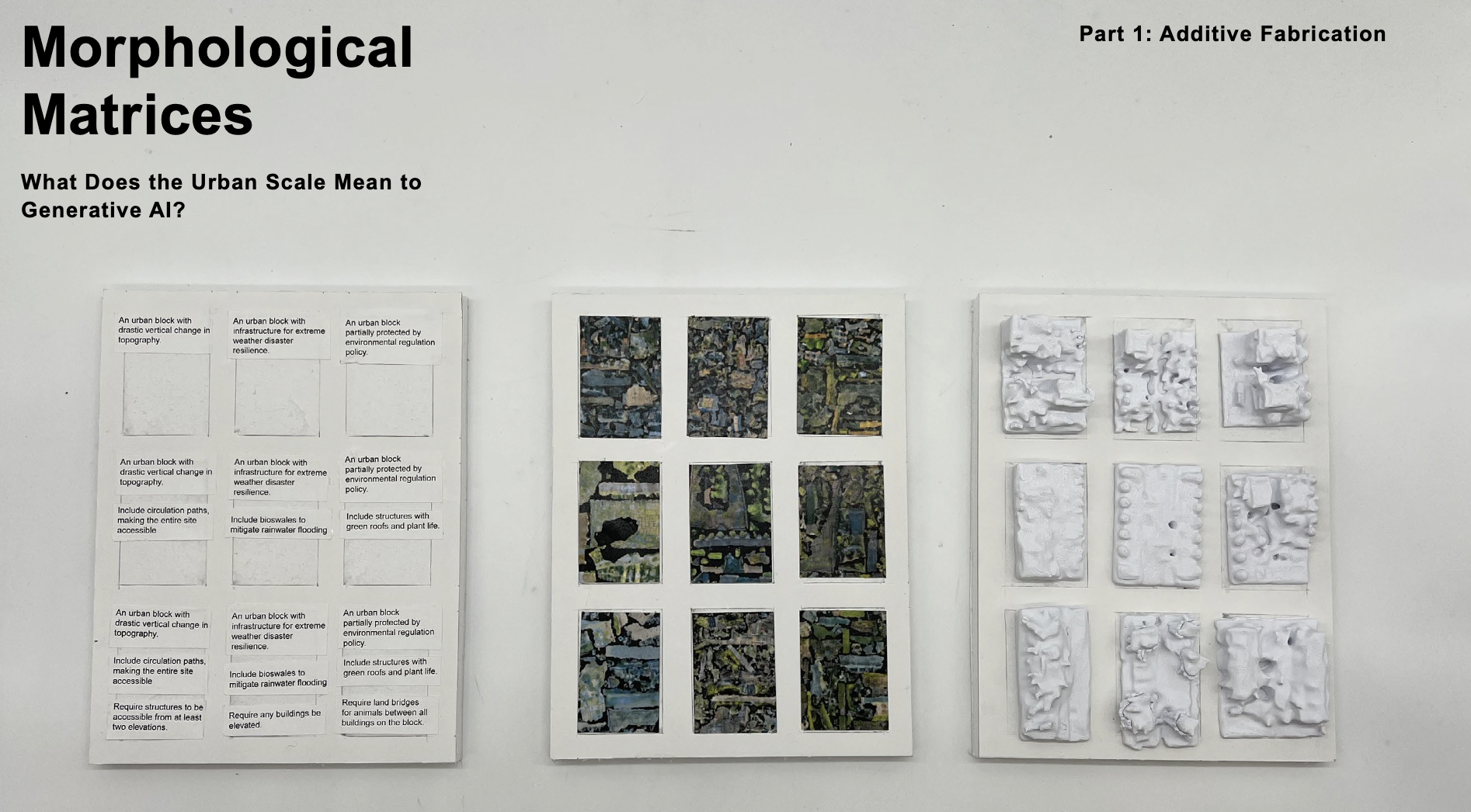
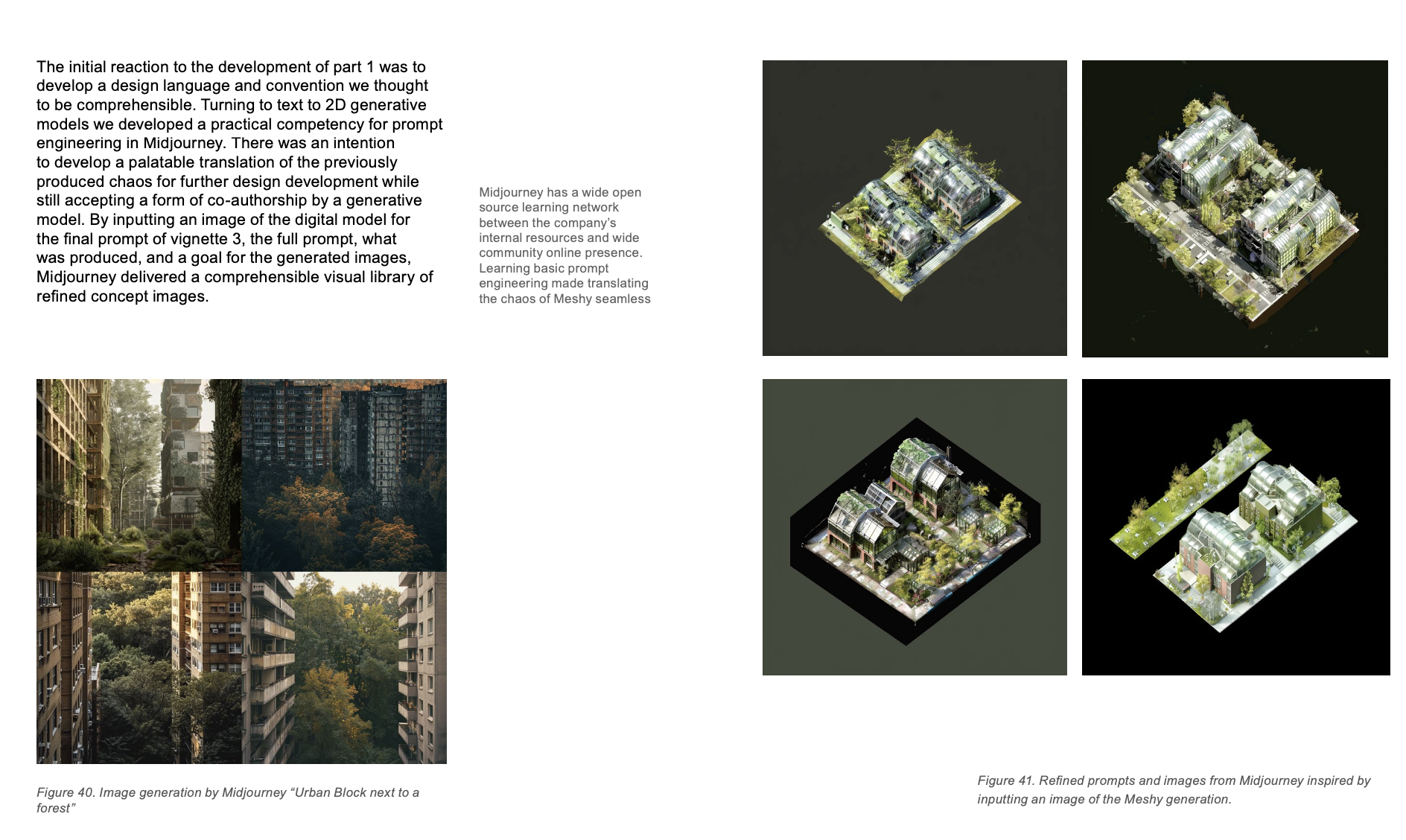
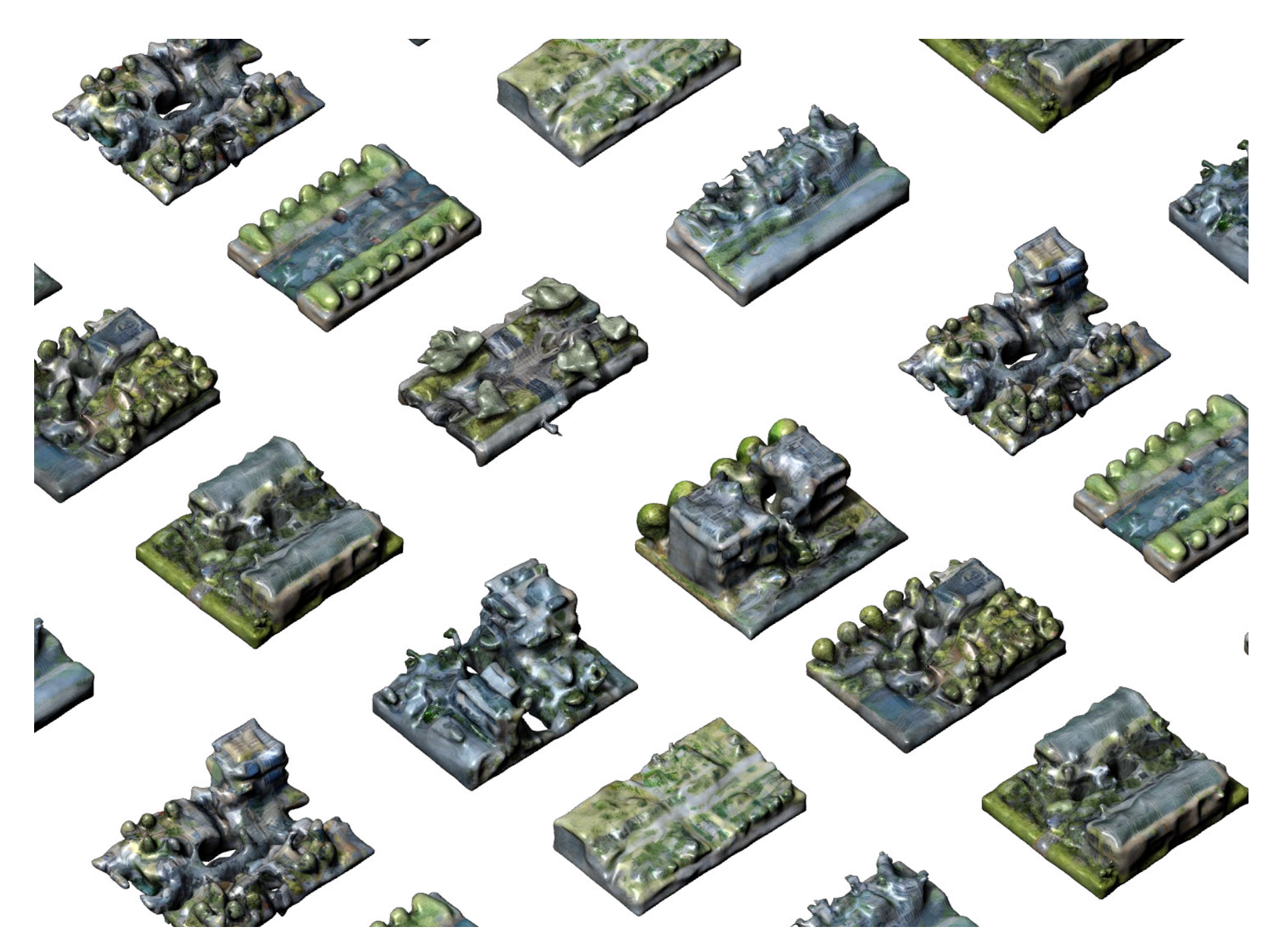
Group 3: ChatGPT as personalized tutor for learning scripting in grasshopper



Group 4: 3D scanned paper crumpling; AI-generated misinterpretations, further mis-interpreted for 3D printing vs CNC milling


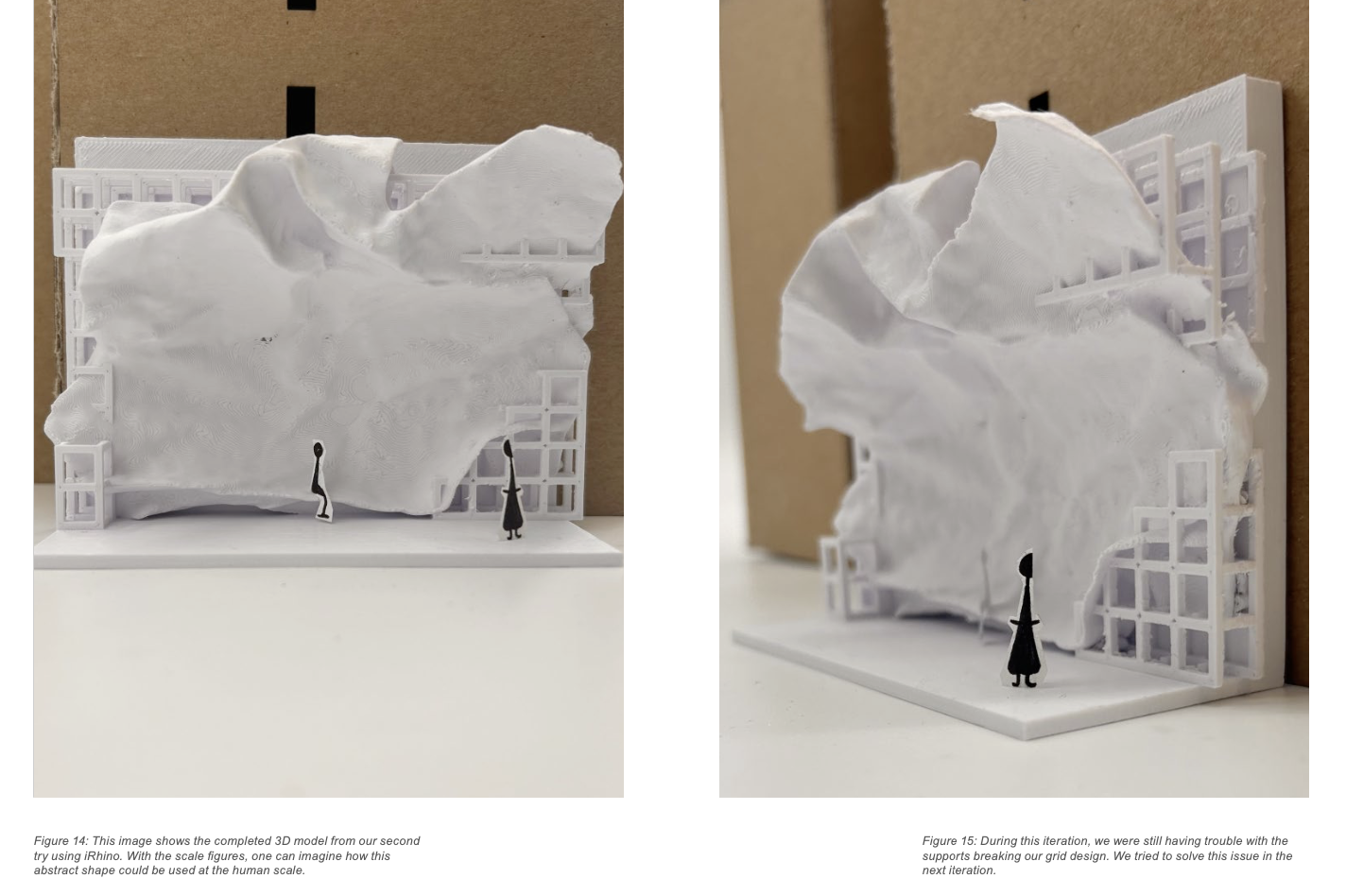


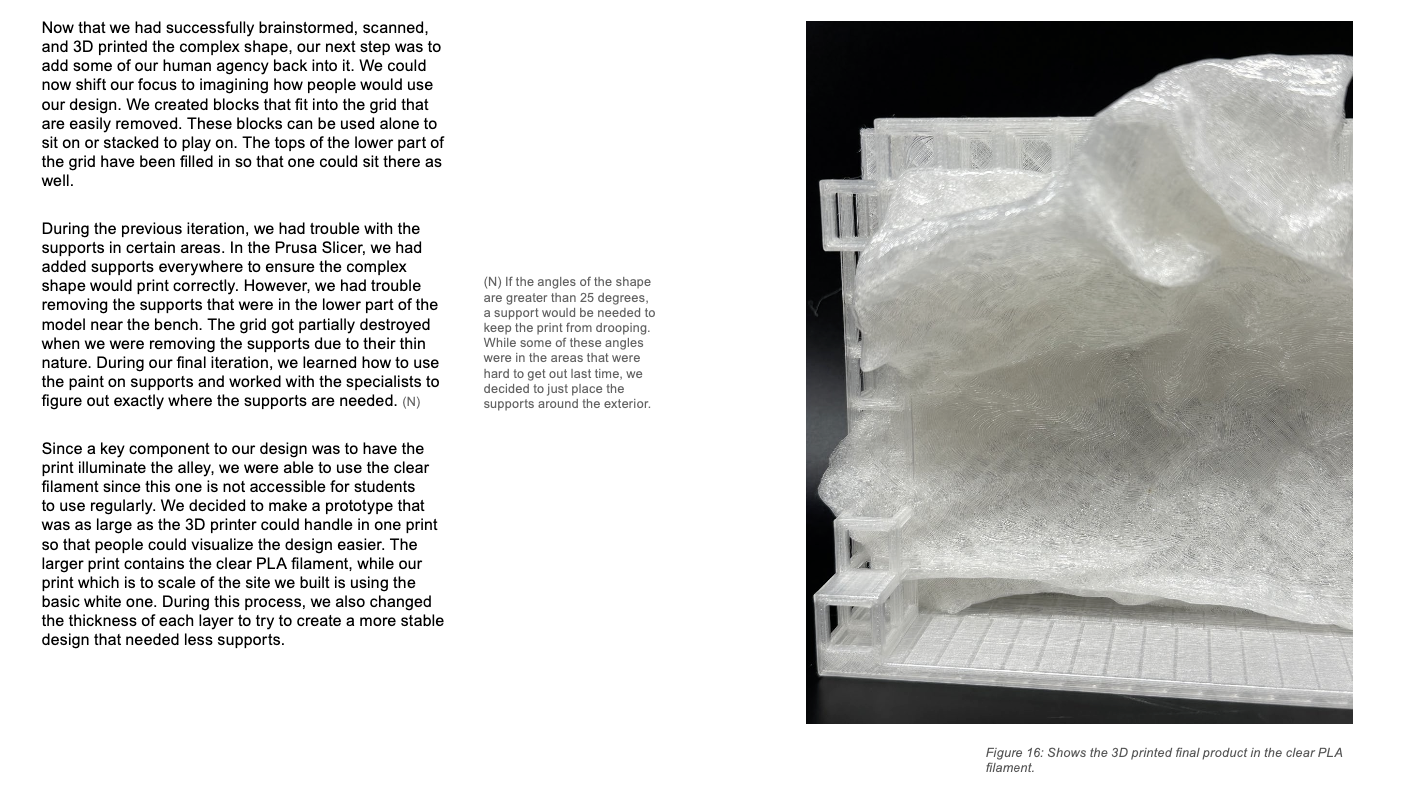
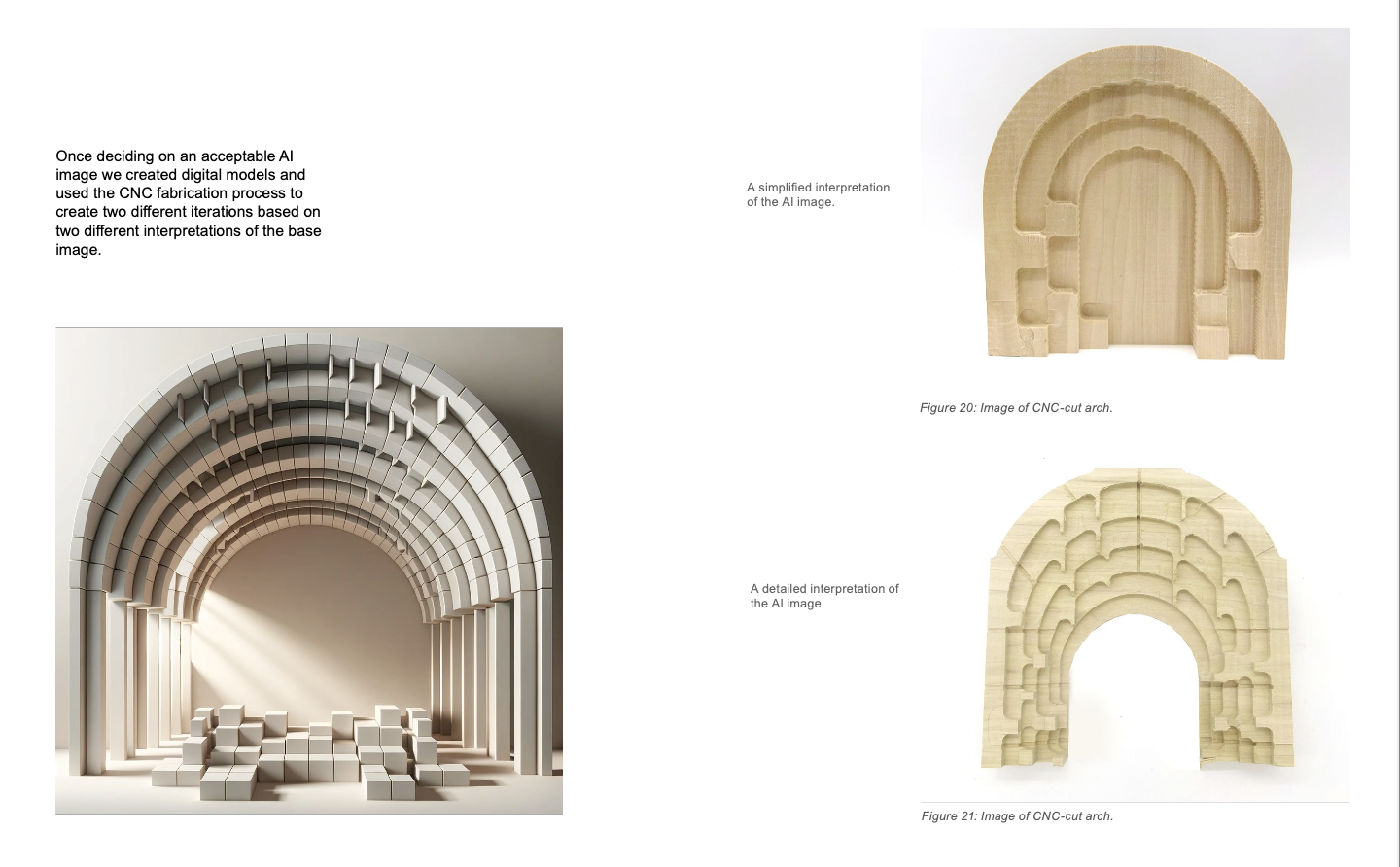




Peer-reviewed paper:
Song, H., Guida, G., “From AI-Aided Design to Physical Prototyping: Pedagogical Experiments for Fostering Critical AI Literacy”, Conference Proceedings of Ibero-American Society of Digital Graphics (SIGraDi), Barcelona, 2024.
